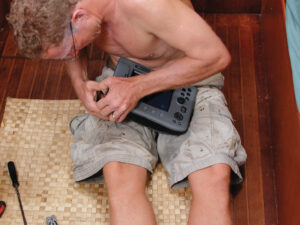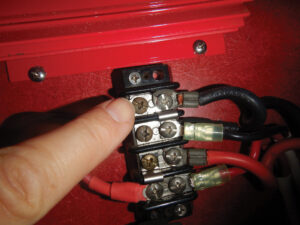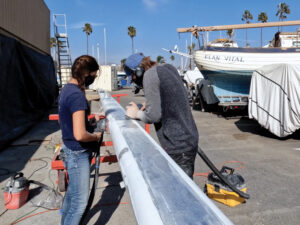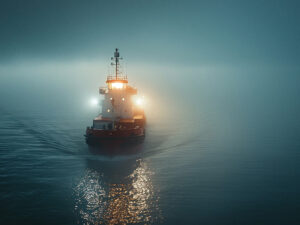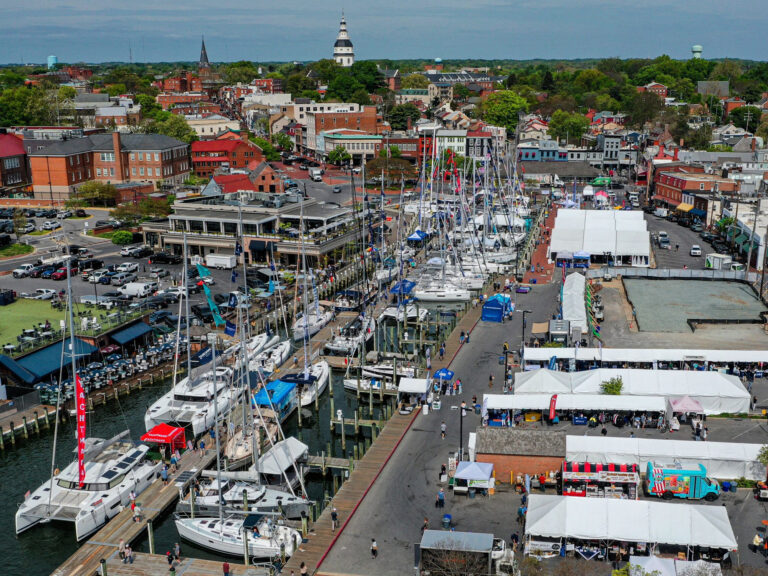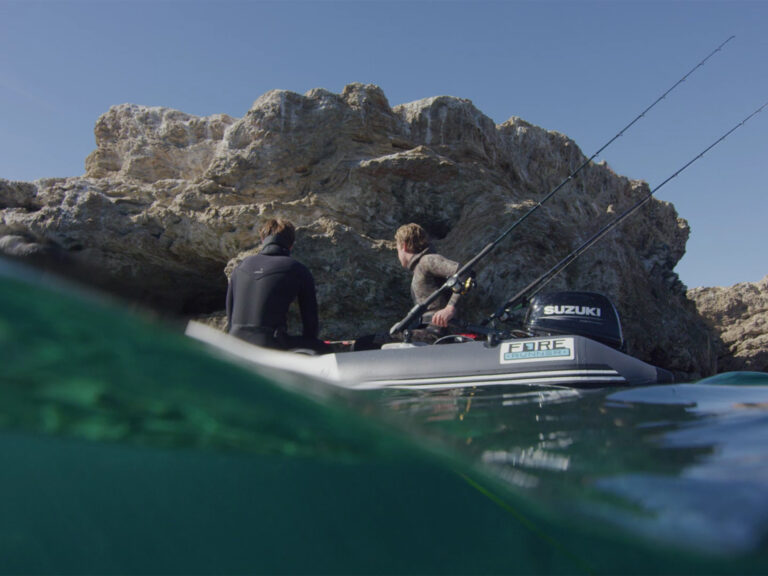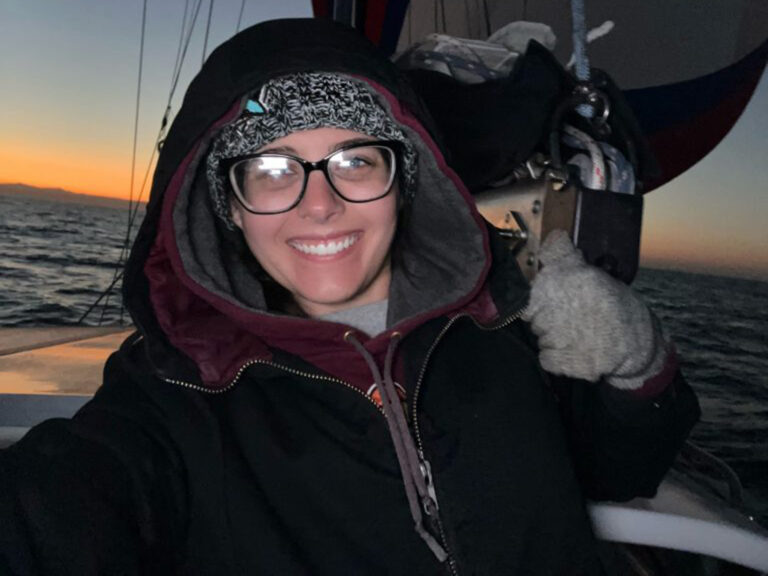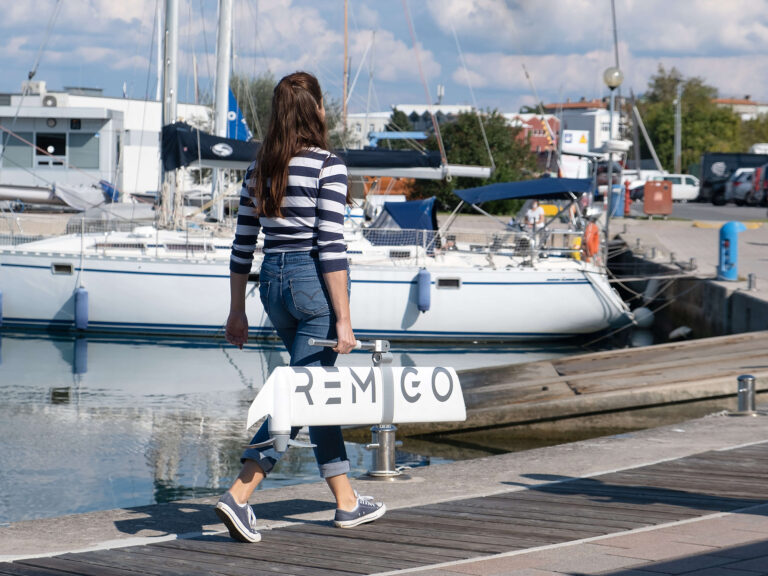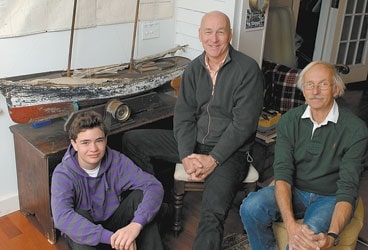
lucky duck crew 368
A Mayday call is a down-the-rabbit-hole interruption for any ocean passage. Needless to say, second only to the gravity of having to issue the call yourself is being the sole recipient of a static-filled radio contact from a vessel and crew in deep trouble. How you train yourself to react-whether you’re the one in trouble or rescuer-reflects how you’ve prepared your boat and yourself for going to sea.
Here’s a tale of how Captain Jim Stanek and his Newport, Rhode Island-based delivery crew reacted when they got a distress call last spring while making their way from Tortola, in the British Virgin Islands, to Tampa, Florida. On board as crew were Mark Williams and his 15-year-old son, George. As they pointed the bow of a well-used Nauticat 42 northward, little did they know that they were about to learn firsthand about what happens when a boat goes down on the high seas. The simple fact that everyone involved in this high-drama episode survived means that everyone involved passed the critical final exam with flying colors.
Lucky Duck departed Soper’s Hole with Stanek and crew aboard after a number of equipment-related false starts. Delays aside, the skipper wouldn’t leave port when crucial systems were on the blink. With all the last-minute details, Lucky Duck’s departure could’ve taken place anytime within a span of 72 hours. But had the boat left even 90 minutes earlier or later, it likely wouldn’t have been within VHF radio range to receive the fateful Mayday call. For the two strangers who were sailing a reciprocal course, from Florida to the Virgins, it was a lucky roll of the cosmic dice.
Just before dawn on the third day out, Stanek tried to snatch a few winks belowdecks after coming off the late-night watch, during which winds had slowly moderated into the low-teens after a night of sustained 25 knots. The VHF suddenly crackled with static and got everyone’s undivided attention with one heart-stopping word: “Mayday”; it seemed to hang ominously in the morning air. Stanek, the owner of Trans-Atlantic Marine, is the consummate professional skipper, with more than 200,000 bluewater miles and 17 Atlantic crossings under his belt. When his attempts to relay the Mayday to anyone else within radio range failed to gain a response, he quickly assessed their limited options. Lucky Duck’s crew was on its own to carry out a rescue.
Stanek immediately fell back on his years of preparing for the unexpected. He got the most vital information first, calmly walking the heavily accented voice on the radio through the necessary steps for providing their exact latitude and longitude. The data, repeated and confirmed a number of times, was written into Lucky Duck’s log; radios on sinking boats are notoriously fickle. Stanek later observed that while you always prepare for these situations, the reality is far tougher to pull off than you expect.
The coordinates that Stanek received put the target about 30 miles off the coast of the Dominican Republic and over six miles away from Lucky Duck. The crew changed course, engaged the radar, and began motorsailing at top speed toward the spot. Once the rescue boat was squared away on the target, Stanek focused on getting as much information about the present situation aboard the sinking boat as possible. He first confirmed the visual description: The vessel, named Tovarish, a Valiant 32, had a light-blue hull and aluminum mast; the masthead running lights were still operating, and the sails were still up. The caller then confirmed that two people were aboard, water was coming in fast from an unknown source, and the electric bilge pump wasn’t working.
The first order of concern was, of course, the health and safety of those aboard. Stanek asked if they were wearing lifejackets. Was anyone injured? Was either person physically limited? Were they on deck or below? Any signs of hypothermia? Any anxiety-produced reluctance to take positive action? He got a description of the clothes that each of the men was wearing.
Stanek learned that both men were stressed, wet, and cold but in relatively good shape. They said that should Tovarish go down, they were ready and able to leave the boat with life vests, boat fenders, and personal items.
Once those details were written in Lucky Duck’s log, Stanek turned to the logical safety items for abandoning ship. Did they know the location of their flares? Was the dinghy in the water? Did they have a life raft, and was it ready to deploy? He asked about the handheld waterproof VHF, the color and style of the life raft, the ditch bag, fresh water, and such signaling devices as mirrors, whistles, and a foghorn.
The news wasn’t good. Tovarish’s dinghy was deflated and inaccessible belowdecks. The sailors had no life raft, ditch bag, or handheld VHF radio. They had a new U.S. Coast Guard-approved minimum flare kit but no signaling devices other than the whistles on their vests. Their cellphones had no signal. Meanwhile, the water was over the tabletop and the settee, and they were huddled in the cockpit.
Once he’d verified crew-welfare and abandon-ship procedures, Stanek tried to brainstorm with the Russian captain, Mikhail Zrelov, to discover where the hull was breeched and whether some further action by the crew could stem the tide. By then he’d learned that the captain and his Canadian mate, Mike Butler, were delivering the unfamiliar-to-them boat for the owner. They reported that the water was now becoming dangerous belowdecks, sloshing around heavily in the swells. A full inspection of such possible trouble areas as through-hulls and the stuffing box, Zrelov reported, was out of the question. It was evident that the boat was going down very soon.
Now less than five miles away, Stanek asked for a flare to confirm Zrelov’s location, but they made no sighting. The procedure was repeated at one mile, but still they spotted nothing. Mikhail later said that of the four flares, one failed to ignite, one nearly fell back on deck after reaching the spreaders, and two barely cleared the masthead before going out.
Lucky Duck finally spotted Tovarish in the growing dawn, and in a matter of 20 minutes, Stanek maneuvered his boat upwind of the disabled vessel to begin the rescue in lumpy seas.
“Once we were on site, things happened very quickly,” Stanek said. “The water finally reached the level of the companionway, and the two crew jumped clear and swam away. It was amazing how fast the bow tilted skyward and the whole boat slipped beneath the water. It was eerie watching the cabin lights and navigation lights-all still on-sink below the waves.
“I’ve never seen a boat sink before,” he said. “Watching it go down was a very sad and sobering experience.”
Soon the rescued men were in dry clothes and talking about their experience while wolfing down a hot breakfast. Their voices were hushed, and their eyes constantly panned the blank horizon in all directions. They knew that things could’ve turned out much differently.
Eventually, Stanek and his new guests considered the options and decided it would be best to proceed to the port of Matthew Town, on Great Inagua Island in the Bahamas, where the two shipwrecked sailors were turned over to authorities with the Bahamas Air Sea Rescue Association.
They say that all rescues are a matter of timing, luck, and execution; this one certainly proves the point. This is also a tale of two boats and two crews, one ready for anything, the other not. If even one of the dozens of separate strands that held this rescue together had come unraveled, two sailors might have disappeared without a trace. The moral of the story is that preparation aboard cruising boats is never a steady state; it’s an ongoing action best commenced long before you head out to sea. Simply slipping dock lines and hoping for the best is a pretty thin philosophy on which to bank your life when putting to sea. You can’t depend on meeting up with a Lucky Duck.
R. J. Rubadeau, a frequent CW contributor, sailed with Jim Stanek on an expedition that took them around Cape Horn.

